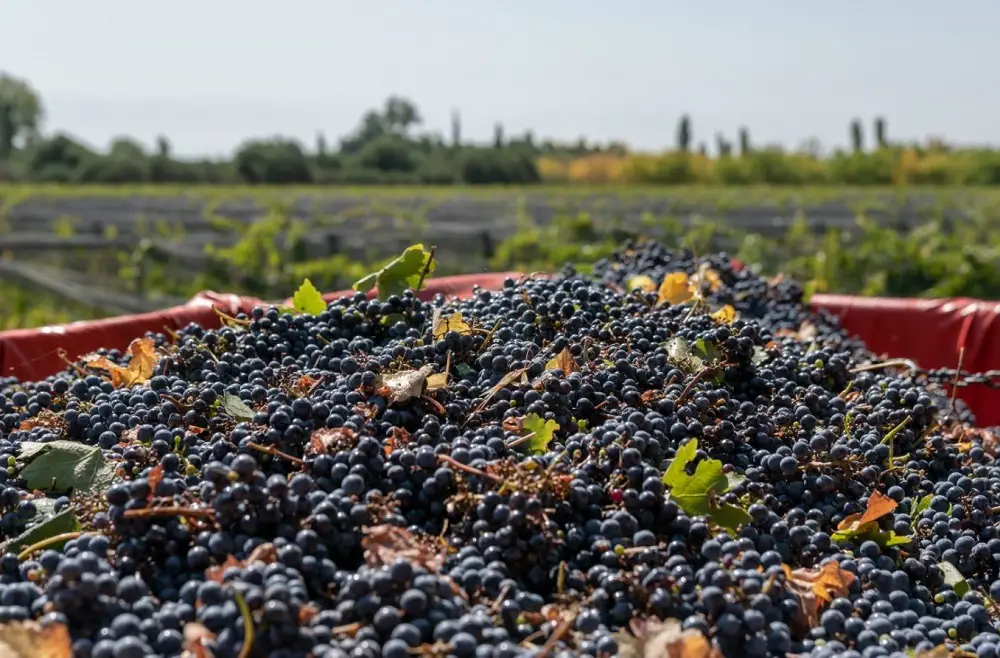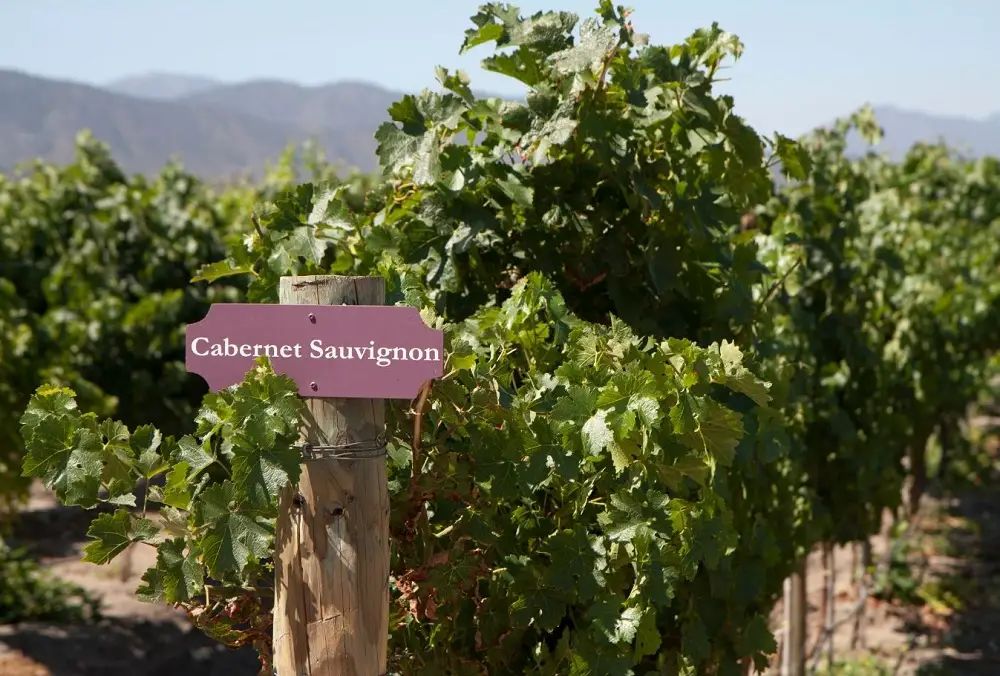Even if you don’t know much about wine, you’ve surely heard of Cabernet Sauvignon. It’s one of the best-known wine varieties in the world, and for a good reason. This rich, versatile wine is a great choice for both a dinner date and a binge-watching night at home.
Nowadays, many brands produce Cabernet Sauvignon, and Barefoot is no different. But is it worth trying? If you want to find out if Barefoot Cabernet is the right choice for you, then keep on reading.
About Cabernet Sauvignon In General
Cabernet Sauvignon is one of the most popular grape varieties in the world. Almost every major wine-producing country grows it, which clearly indicates it can thrive in different climates. From Canada to Australia, over 341,000 hectares of the Earth is covered in Cabernet vineyards.
But did you know that this popular type of grape is actually a rather new variety? It was created in the 17th century in southwestern France, as a result of the crossing of Cabernet Franc and Sauvignon blanc.
One thing we can account for the popularity of Cabernet Sauvignon is its ease of cultivation. The thick skin of the grapes and the hardiness of the vines are to be thanked for their resistance to frost, rot and other viticultural hazards. What’s more, you can expect consistency in flavour and structure.
Generally, Cabernet Sauvignon wine is full-bodied, high in tannins and quite acidic. In a cold climate, the grapes create a wine with a strong black currant flavour with a hint of green pepper notes. As the wine ages, you can expect to taste mint and cedar, too. In a moderate climate, the black currant flavour is often accompanied by notes of black cherry and black olives. Finally, in hot climates, like those in South Australia, the wine has that jammy, over-ripen flavour with a tinge of eucalyptus.
About Barefoot Cellars
The origins of Barefoot Vineyards can be traced back to Davis Bynum’s garage, where he founded the winery back in 1965. Still, it wasn’t until 1986 that this brand became what it is today, known not only for high quality and affordable wine but for supporting good causes all over the world.
In the manufacturer’s words, wine tastes better in a tee than in a tux. And that’s true, at least in the case of Barefoot wines. The idea was to create a collection of wine varieties that are tasty and rich, yet quite approachable.
After several decades of making wine, Barefoot Vineyards today offer a wide variety of wines. Red wines, white wines, pink wines, champagnes, spritzers… Whatever your poison, Barefoot surely has something for you.
However, if you’re searching for vintages, you won’t find that here. That’s not uncommon with affordable wines, considering their production volume isn’t as large as some bigger wine brands. But what you can expect from Barefoot wines is consistency in quality and taste.
So if you’re all for experimenting, then this brand might not be what you’re looking for. But, if you want a wine to count on it to always taste just the way you like it, then you’re surely going to love Barefoot varieties.
Barefoot Cabernet Sauvignon In-Depth Analysis

The bottle of this wine comes straight from the cellars in Modesto, California. It’s a place with a semi-desert climate, where winters are mild and with moderate precipitation, and summers are dry, hot and long. Let’s see how the climate affects this wine.
Appearance
Barefoot Cabernet Sauvignon has a rather opaque red colour, lighter than the usual varieties you see on the market. Even though it’s not a sparkling wine, Barefoot Cabernet sizzles when poured, but only for a while.
The legs of this wine are thick and slow-travelling, like any wine with high alcohol content. To be precise, Barefoot Cabernet has 13.5% alcohol, slightly less than most other varieties on the market.
Aroma
This bold wine has the aromas of berries. You can also pick up notes of tobacco, oak and even some red currants. One thing that’s surprising about this variety’s aroma is that you don’t really notice its high alcohol content.
Taste
This wine has raspberry and blackberry notes, and an oaky finish. It’s quite buttery, which is something you wouldn’t expect from this wine.
Mouthfeel
Generally, Cabernet Sauvignon is high in tannins, which are responsible for that dry feeling in your mouth. This is something not everybody loves, and if you fall into that category, then you’ll be pleased with this Barefoot variety. This wine is tannic, yet not as much as other Cabernet Sauvignon wines out there.
Finish
From the moment you sip the wine, you can feel its oaky note that stays well after you swallow.
Overall Impression
Usually, you expect Cabernet Sauvignon to be very complex. And if that’s what you want from this Barefoot variety, then you might not be thrilled with the results. But that doesn’t mean this is a bad wine. If you’re looking for a well-balanced Cabernet, you might like it. It’s a great wine for both beginners and those who prefer to sip a light wine while sitting next to the fireplace.
Pairing Cabernet With Food
Generally, Cabernet Sauvignon has a bold flavour, meaning the food you pair it with should be richer in order to cut through the wine. Fish, for instance, would get overwhelmed by the strong aromas of the wine.
When pairing Cabernet with food, you can’t go wrong by choosing red meat. Who wouldn’t love a good steak paired with a bold red wine? Fatty cuts of beef and lamb are great choices. Each bite leaves that fatty coating, and strong wine like Cabernet simply cuts through that coating and clears your palate, preparing you for the next bite.
If you’re not so fond of steaks, burgers are another good option. While they’re not the first meal that usually comes to mind when talking about red wines, this pairing is a match made in heaven. After all, what’s a burger if not a minced steak between two buns?
Since Barefoot Cabernet is a bit lighter than most other varieties, you can pair it well with spaghetti, too. Our suggestion would be either Bolognese or Spaghetti and Meatballs.
There’s something for the vegetarians out there, too. Portobello mushrooms are a great pairing with this wine variety. Whether they’re grilled, baked or stuffed, it doesn’t matter. They’ll go beautifully with that Cabernet bottle you’ve just bought.
Finally, this variety can be a great choice for a cocktail party. In that case, it will go well with a cheese plate. Hard cheeses like aged cheddar, gouda or gorgonzola complement the wine flavour really well. But stay away from soft cheeses, as the rich aroma of Cabernet will overwhelm them.
Alternative Options To Barefoot Cabernet Sauvignon
Cabernet Sauvignon is a rich and complex wine. This variety from Barefoot is somewhat lighter, and naturally, is not everyone’s cup of tea. If that’s the case with you, here are some alternatives to it that you can find on the market.
Substance Cabernet Sauvignon
If you’re looking for a rich and heavy Cabernet Sauvignon, don’t miss out on this variety by Substance. This Washington state harvested wine has flavours of black cassis, dark cherry, tobacco leaf and morels. You might even notice a tinge of olive notes. While this wine is richer than the Barefoot one, it’s also a bit more expensive, so keep that in mind.
Hogue Cellars Cabernet Sauvignon
Here’s another variety that comes from Washington state. This 2017 vintage has a beautiful structure and fruity flavours. With the first sip, you can taste black cherry, spicy oak and tobacco, as well as notes of sassafras and cassis. It’s a rather unique wine, especially for the price.
Forest Glen Cabernet Sauvignon
This Californian Cabernet Sauvignon is fruity and affordable, just like the one from Barefoot. But, the Forest Glen variety is bold and velvety. You can sense the notes of cola, black cherry and tobacco, as well as raspberry and violets. For the price it’s sold at, it’s quite a steal.
Other Barefoot Red Wine Varieties

So you’ve tried Cabernet Sauvignon, but it’s not up to your liking? Don’t worry, Barefoot Cellars offer plenty of red wine varieties. Here’s what we suggest you try instead.
Merlot
If you’re looking for something more fruity and easier to drink, don’t pass on Merlot. This wine variety is known for rich flavours of boysenberry and split cherries, hints of oak and its chocolate finish. It’s definitely a high-quality wine with a low price tag. This variety won a Platinum Award at the 2020 Sommelier Challenge International Wine & Spirits Competition.
Pinot Noir
Not a fan of heavy wines? Don’t worry, this Pinot Noir is the opposite of that. This is a medium-dry wine with fruity flavours of red cherry, ripe dark cherry and raspberry jam. Thanks to the tinge of molasses, the wine leaves a velvety mouthfeel and just a hint of vanilla and spice.
Malbec
Usually, Malbec is perceived as an affordable alternative to Cabernet Sauvignon. But Barefoot Cellars seem to disagree. Both of these wines share the same price tag, and that’s also true about their quality.
This is a wine of plush red colour and juicy flavours of currant and blackberry. Thanks to the caramel, spice and vanilla aromas, as well as a hint of oak, what you get is a long, silky finish.
Frequently Asked Questions
How do you serve Cabernet Sauvignon?
It’s a common misconception that red wine should be served at room temperature. In reality, that’s simply too warm and will leave your wine tasting soupy and overly bitter and alcoholic. Instead, you should serve it at a temperature of 15 to 18 degrees. To achieve that, simply put the bottle in a refrigerator for anywhere between 30 and 60 minutes prior to opening. Then, let it sit in the bottle for around 10 minutes before you serve it.
What type of glass is the best for Cabernet Sauvignon?
The choice of glass really does matter, since it affects how vapour rises and how you perceive both flavour and aroma. In the case of Cabernet, a Bordeaux glass is the best choice. It has a smaller bowl and is taller than a standard glass for red wine, and that increases the aroma of this complex wine variety.
What are the best regions for growing Cabernet Sauvignon?
In terms of the Old World, Bordeaux is hands down the most renowned region for growing this type of grapes. Tuscany comes at a close second, with the rise of the Super Tuscan. When it comes to the New World, California and Washington state are both well known for growing Cabernet Sauvignon. As for the other countries, Chile and Australia, especially its southern part, are also popular for making this wine variety.
What is the best Cabernet Sauvignon?
There’s no right answer to this question. It’s all a matter of personal preference. Depending on the climate they’re grown in, Cabernet grapes can be either tart or more sugary. If you like wines that are high in tannins, try out Cabernet from France or Cali. However, those that prefer a lighter body will probably like Australian wine more.
Is Cabernet Sauvignon sweet or dry?
To put it simply, Cabernet Sauvignon wines are generally dry. That’s due to their high tannin content and low acidity. But as it often goes with wine, the answer depends on the variety. Thanks to the fruity flavours, Cabernet can come off as sweet. This depends mostly on the region it’s grown.
The Verdict
Cabernet Sauvignon is definitely not the choice for those that are just getting into the wine culture. It’s so bold and rich and can be quite intimidating to newbies. But, this Barefoot variety is certainly milder and a better choice for someone who’s not used to drinking strong wines.
If you’re looking for an affordable bottle of Cabernet that you can enjoy with your friends on a casual weeknight, then this might be a great choice for you.


